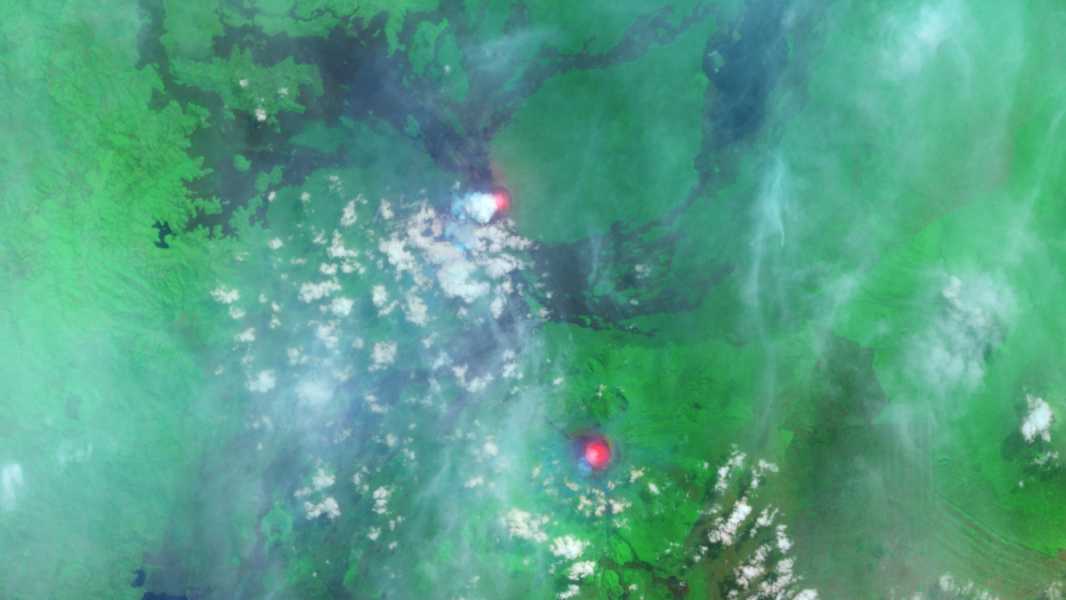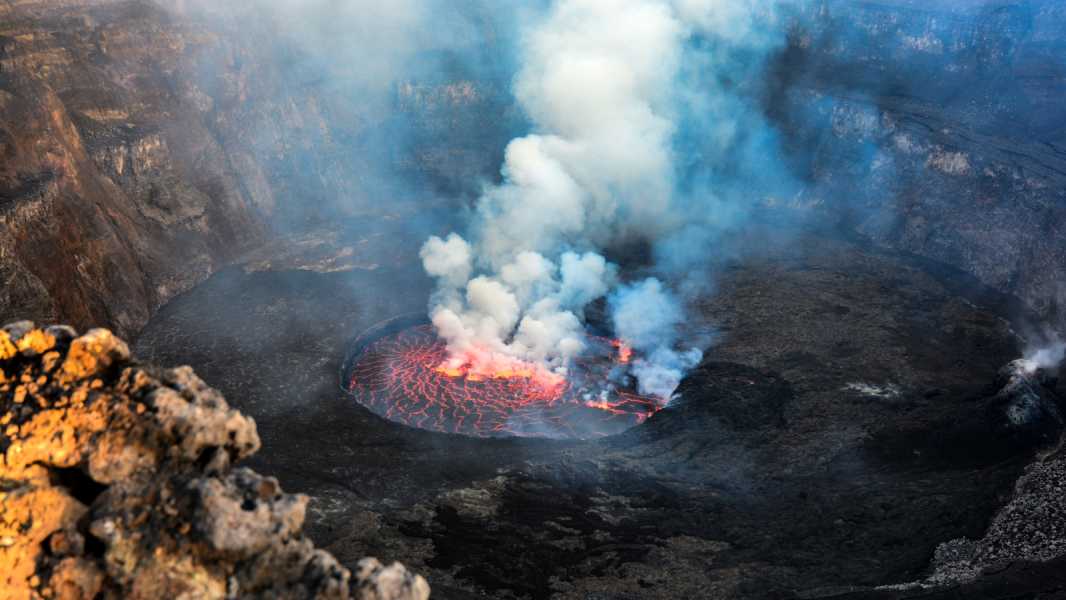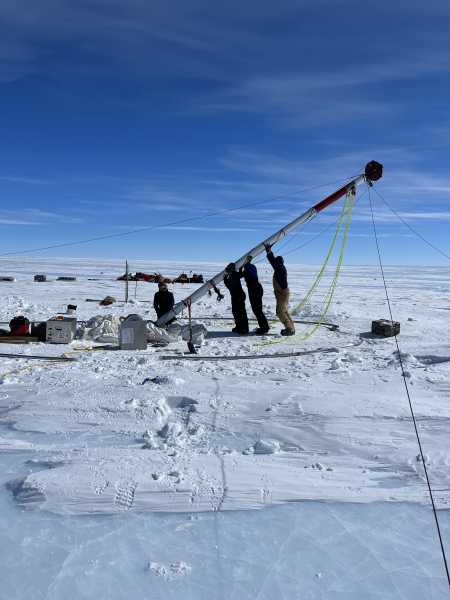
The lava lakes of Nyamuragira (top) and Nyiragongo (bottom) glow red in this 2014 infrared satellite image. (Image credit: NASA/Landsat)
This stunning false-color satellite image shows intense heat emanating from a pair of lava lakes formed by simultaneously erupting volcanoes in Congo. The neighboring peaks are among Africa's most active — and dangerous — volcanoes.
Mount Nyamuragira (top of image) and Mount Nyiragongo (bottom of image) are located about 6 miles (10 kilometers) apart, north of the city of Goma, home to more than 1 million people.
Nyamuragira is a domed shield volcano rising to 10,033 feet (3,058 meters), while Nyiragongo is a steep-sided stratovolcano rising to 11,385 feet (3,470 meters) above sea level.
The satellite image was taken a few weeks after Nyamuragira began erupting for the first time since March 2012. That eruption ended in May 2016, but the volcano has since erupted twice more, from November 2016 to May 2017 and again in April 2018, with eruptions still ongoing. Nyiragongo, meanwhile, has been erupting continuously since May 2002.

The lava lake at the top of Nyiragongo was considered the largest on Earth for several periods during its ongoing eruption. This photo was taken in March 2018.
During simultaneous eruptions, large lava lakes were observed at the summits of both volcanoes. The lava lake at Nyiragongo is particularly notable, as stratovolcanoes do not typically support such features. At various points over the past two decades, this fiery basin held the title of the largest lava lake on the planet, according to a 2021 study.
The image was taken in infrared light, which makes the lava lakes appear red while the surrounding vegetation appears bright green, according to NASA's Earth Observatory.
Double threat
According to a 2021 study, Nyamuragira and Nyiragongo formed about 12,000 years ago during a period of increased activity along the Cameronze Rift, which lies directly between the two volcanoes. Therefore, their activity is partially related, even though they are separate entities.
These vul
Sourse: www.livescience.com





